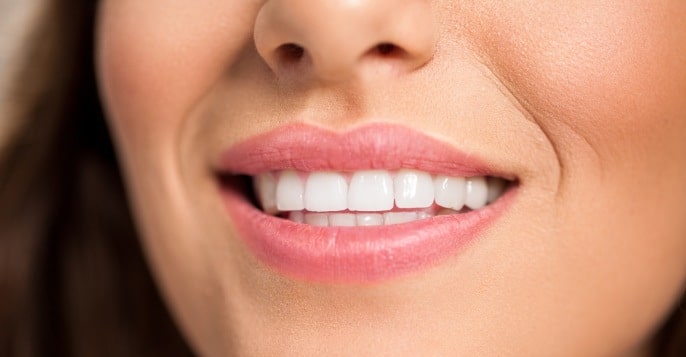A child goes through an embarking journey of transitions during growth, including their dentition. The transitional stage that occurs with the development of a child’s dentition is the rise from milk to permanent or primary teeth. Such a process is interesting but very crucial for their long-term health and the proper function, in fact, for the well-being of their oral cavity.
In this blog, we will cover what milk teeth are, the difference between milk teeth and permanent teeth, and what caretakers should know as they shift from having those temporary chompers to a full set of adult teeth.
What are milk teeth?

Milk teeth, also known as deciduous or primary teeth, are the first set of teeth erupting in a child’s mouth. They begin coming in about six months of age but continue to erupt up until three By the time they are three years old, most children would have a full set of twenty milk teeth – ten on top and ten on the bottom. These small little teeth may be temporary, but they play a major role in the development of your child.
They aid your little one to chew better, speak well, and are also a placeholder for those permanent teeth that come out later. Their role is far greater than chewing food, and proper enunciation. The major role is to set space in the jaws for permanent teeth to grow. At the time when the primary teeth are ready to shed, they guide the permanent teeth into appropriate positions.
What are permanent teeth?

Adult teeth also known as permanent dentition appear about at the age of six and erupt until the person is about 21 years old. While being temporary, milk teeth were preceded by their permanent counterparts, meant to last for life. The eruption of permanent teeth continues even after a person reaches about 21 years, during which time the last set of teeth usually to appear is the wisdom teeth.
An adult usually possesses 32 permanent teeth, which include four wisdom teeth. Permanent teeth are greater in size, with a more resistant structure, particularly designed to resist the chewing forces during one’s lifetime. Their location and arrangement also assist in the alignment of the jaws and also in support to the shape of the face.
Number of milk teeth in humans
Normally, humans have 20 milk teeth. These comprise:
- 4 central incisors (two upper and two lower)
- 4 lateral incisors (two upper and two lower)
- 4 canines (two upper and two lower)
- 8 molars (four upper and four lower)
The milk teeth begin erupting by the age of six to pave the way for the permanent ones to come. Loss of baby teeth and the emergence of permanent ones goes on during early adolescence.
Number of permanent teeth in humans
The complete set of permanent teeth in a human consists of 32 numbers. There are:
- 8 incisors
- 4 canines
- 8 premolars
- 12 molars, including in the four wisdom teeth.
One major difference between milk teeth and permanent teeth is number, the key difference is the premolars and wisdom teeth of the permanent dentition. In fact, premolars are the teeth that help grind and eat down food, hence making the eating process much easier. However, wisdom teeth tend to pop up very late in life or even in late teens or early twenties. Actually, not everyone does develop wisdom teeth but for most people, they pop up at this age in life.
Key difference between milk teeth and permanent teeth
Milk and permanent teeth have similar functions such as chewing, speaking, and general health. However, there are some fundamental difference between milk teeth and permanent teeth
1. Size and Structure
The milk teeth are significantly smaller compared to permanent teeth. This is understandable because they have to fit in the jaw of the child, which is much smaller. In contrast, permanent teeth are larger in size and are better suited to support the adult jaw and all the chewing required by adults.
2. Enamel Thickness
In the case of milk teeth, the outer layer is also thinner when compared with permanent teeth; it is termed enamel. This thickness range makes milk teeth more susceptible to cavities and decay whereas reduces the incidence comparatively in permanent teeth.
3. Root Length
The roots of milk teeth are shorter than permanent teeth. As the permanent teeth start pushing through, the roots of the milk teeth dissolve and create looseness in the baby teeth to fall out. Permanent teeth have much longer, stronger roots anchoring them safely in place.
4. Colour
Milk teeth are normally whiter than permanent teeth. This is because the enamel of milk teeth is less dense and more opaque, hence white-colored. Permanent teeth usually appear a little yellowish as they have more dentin beneath the enamel.
5. Shedding tendency
Milk teeth are only temporary and are going to fall out as the child grows. Permanent teeth are meant to stay there through and throughout one’s lifetime if taken care of properly.
6. Functionality and Resilience
Milk teeth and permanent teeth both help the child eat and speak. However, permanent teeth are much harder and more lasting.The milk teeth are believed to be for a shorter time period and, additionally, much more prone to decay and wear.
Ugly duckling stage: Transition from milk teeth to permanent teeth
The process of the change of milk teeth to permanent teeth is gradual. For example, usually a child begins to lose the primary teeth at an age of about six. First of all, incisors go, then molars and lastly canines.
An awkward transition is when milk teeth start shedding out and permanent ones start appearing. In this stage, children may have a mix of both milk and permanent teeth, which gives a very uneven, crooked appearance. For example, as the permanent teeth erupt, especially the front ones, they may be larger and spaced out, giving an unbalanced look. This is quite natural and transient, as the teeth will typically sort themselves out over time.
If you are worried and confused about whether your child is just going through the “ugly duckling stage” or perhaps has a dental malocclusion, it is always better to see a professional. Book an appointment with us so that your child’s smile will be on the right track!
Caring for milk teeth and permanent teeth
After understanding the key difference between milk teeth and permanent teeth, it is equally important to learn how to maintain them Regardless of which stage your child is at – still sporting their milk teeth or getting new permanent teeth – appropriate oral hygiene will be important. Here are some necessary tips for each stage:
For Milk Teeth:
- Start brushing your child’s teeth as soon as the first one appears.
- Use a baby toothbrush and a tiny smear of fluoride toothpaste.
- Once two teeth touch, it’s time to introduce flossing.
- Limiting sugary snacks and drinks is also important since milk teeth can easily develop cavities.
For Permanent Teeth:
- Make sure to brush at least twice a day with fluoride toothpaste.
- It’s equally important to teach your child the right brushing and flossing techniques to set up healthy habits for life
- Regular dental checkups are scheduled to monitor health and development of the teeth.
One of the least emphasized yet a very effective way of preventing problems in the teeth, be it adults or children is “regular dental check-ups”. This ensures any problem is detected at an early stage so you are spared the agony of those costly, complicated treatments later on. But more importantly, it saves your natural teeth – something truly priceless. Book your appointment with Orthosquare and extend the warranty of your natural teeth.
Why care for milk teeth?
Some may think that milk teeth are just temporary and do not require any additional care or treatment. This is a false assumption. Milk teeth do have a great role in oral health and development of the child. It not only makes children chew or talk properly, but also it serves as placeholders for permanent teeth. When a milk tooth falls out due to decay or injury too early, this can cause the surrounding teeth to shift. Then problems may happen in the alignment of permanent teeth when they erupt.
That is why, one should carefully pay attention to milk teeth so that an easy transition to aligned permanent teeth is secured. Habits formed at an early age are followed even in adult life. Attaining the practice of proper oral hygiene from the milk teeth stage prevents dental conditions at later stages of life.
Conclusion
Knowing the difference between milk teeth and permanent teeth helps caretakers to identify and understand the importance of dental problems. While milk teeth may be transitory, the role they play in the development of a child cannot be discounted. Proper care in this stage of development will ensure the strong, healthy permanent teeth.
That way, having a clear idea of what is necessary and regular visits to the dentist really do set things up for a smooth transition in children, from milk teeth to the full set of permanent teeth, and that in turn sets your kids up for a lifetime of healthy smiles.








